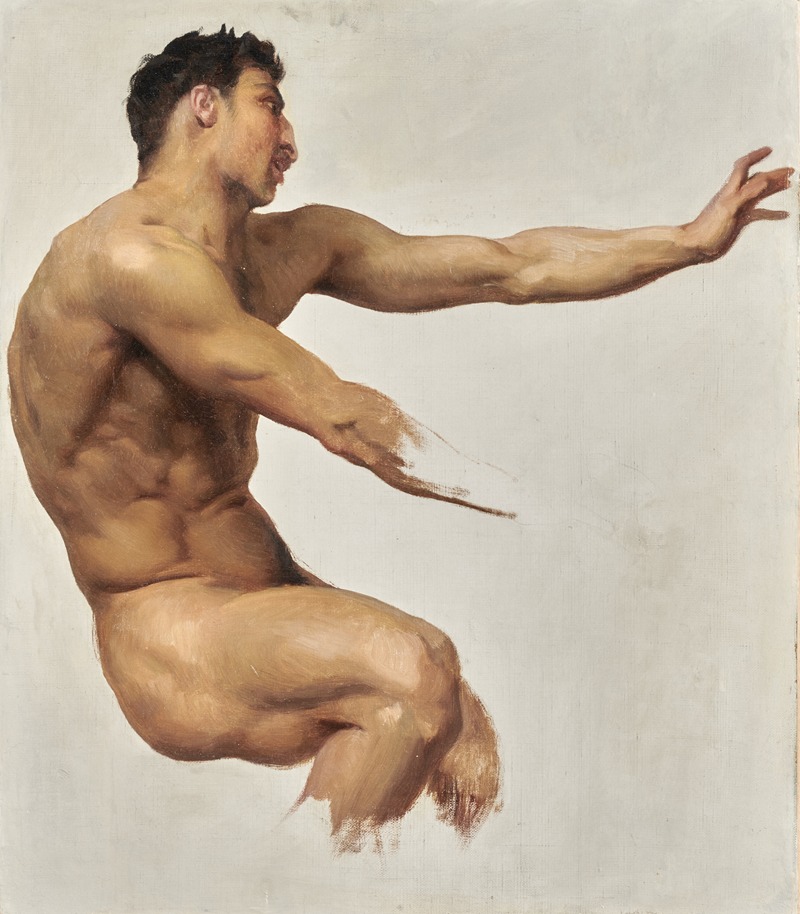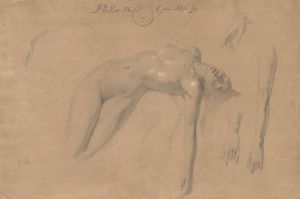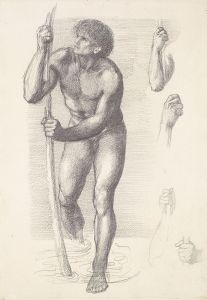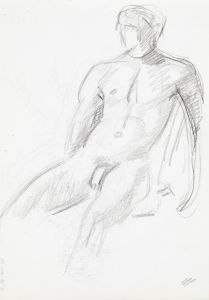
Study Of Satyr For Nymphs And Satyr
A hand-painted replica of William Bouguereau’s masterpiece Study Of Satyr For Nymphs And Satyr, meticulously crafted by professional artists to capture the true essence of the original. Each piece is created with museum-quality canvas and rare mineral pigments, carefully painted by experienced artists with delicate brushstrokes and rich, layered colors to perfectly recreate the texture of the original artwork. Unlike machine-printed reproductions, this hand-painted version brings the painting to life, infused with the artist’s emotions and skill in every stroke. Whether for personal collection or home decoration, it instantly elevates the artistic atmosphere of any space.
"Study of Satyr for Nymphs and Satyr" is a preparatory work by the renowned 19th-century French academic painter William-Adolphe Bouguereau. Bouguereau is celebrated for his realistic genre paintings and his meticulous attention to detail, which is evident in his studies and preparatory works. This particular study was created as part of the preparatory process for his larger and more famous painting, "Nymphs and Satyr," completed in 1873.
"Nymphs and Satyr" is one of Bouguereau's most recognized works and is housed in the Clark Art Institute in Williamstown, Massachusetts. The painting depicts a playful and mythological scene where a group of nymphs is seen teasing a satyr, a creature from Greek mythology known for its lascivious nature and association with Dionysian revelry. The satyr is being pulled into a pond by the nymphs, who are portrayed with Bouguereau's characteristic idealized beauty and grace.
The "Study of Satyr" serves as an example of Bouguereau's methodical approach to painting. Before executing his final compositions, Bouguereau often created numerous studies to perfect the anatomy, poses, and expressions of his figures. These studies were crucial in helping him achieve the lifelike quality and dynamic movement that characterize his finished works. In the "Study of Satyr," Bouguereau focuses on capturing the anatomy and posture of the satyr, ensuring that the final depiction would convey the creature's muscular form and sense of reluctant movement as it is playfully dragged by the nymphs.
Bouguereau's academic training at the École des Beaux-Arts in Paris and his adherence to classical techniques are evident in this study. His work is marked by a smooth, polished finish and a harmonious composition, which were achieved through careful planning and execution. The study likely involved the use of live models, a common practice for Bouguereau, who believed in the importance of studying the human form from life to achieve accuracy and realism.
While the "Study of Satyr" itself may not be as widely exhibited or recognized as the completed "Nymphs and Satyr," it provides valuable insight into Bouguereau's artistic process. It highlights his dedication to classical ideals and his skill in rendering the human form with precision and elegance. Such studies are important for understanding the depth of preparation that went into Bouguereau's major works and the level of craftsmanship that he maintained throughout his career.
Bouguereau's work, including his studies, continues to be appreciated for its technical mastery and aesthetic appeal. Despite changes in art trends and the rise of modernism, which often overshadowed academic art, Bouguereau's paintings have experienced a resurgence in interest and appreciation in recent years. His studies, such as the "Study of Satyr," remain significant for art historians and enthusiasts who seek to understand the meticulous processes behind some of the 19th century's most exquisite paintings.

















